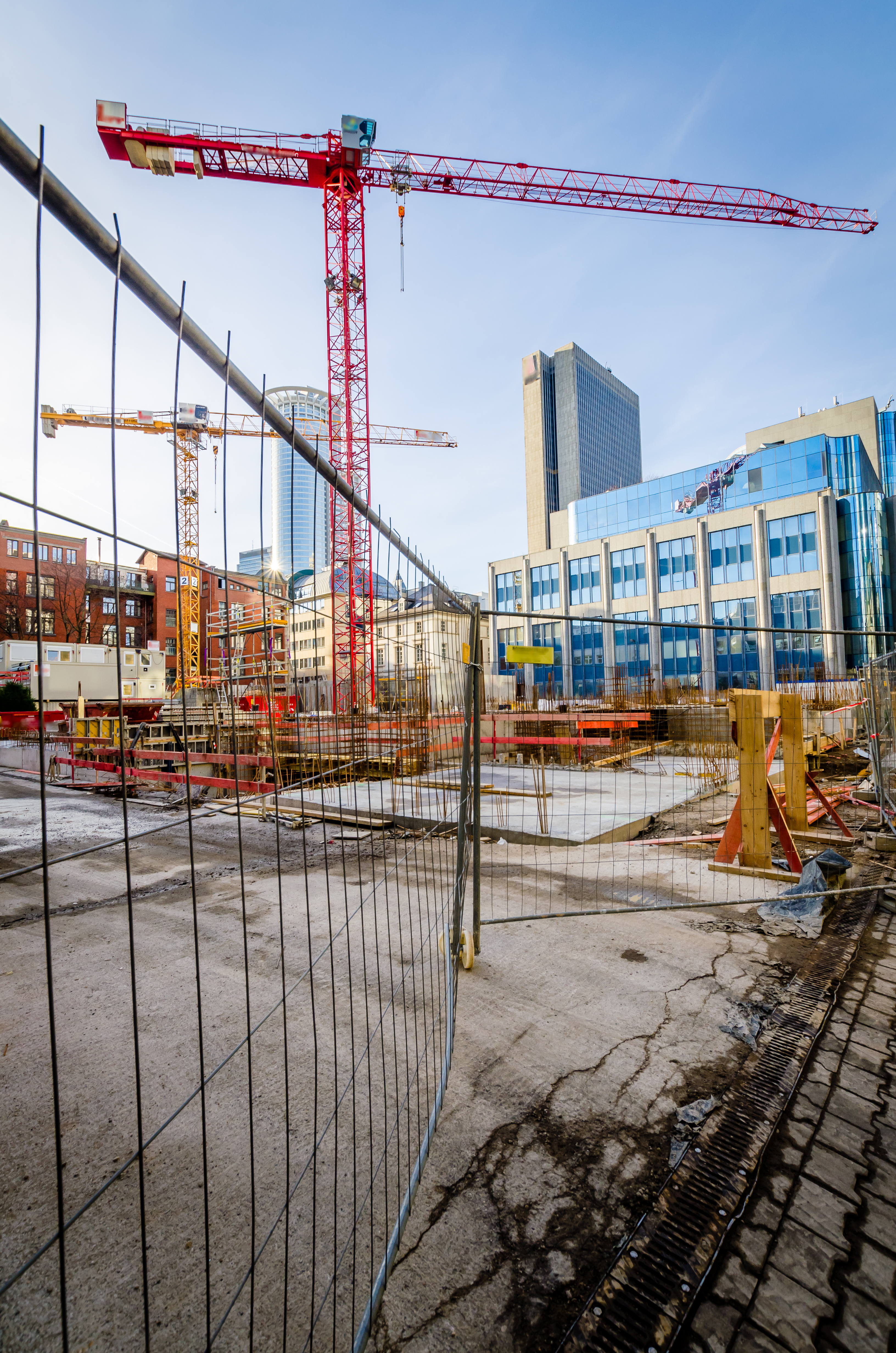
Australia's Construction Bloodbath Has An Unlikely Solution
Australia's Construction Bloodbath Has An Unlikely Solution
Australia's Construction Bloodbath Has One Unlikely Solution
Right, let's cut through the noise. Australia's construction industry is in complete meltdown, and most people are missing the real story.
We're not talking about your typical market downturn here. Construction insolvencies hit a record high, with ASIC reporting 2,975 construction insolvencies in FY 2023-24 - representing 27% of all corporate failures. Forward Path Advisory confirms 3,217 construction firms collapsed in 2024. That's not a blip - that's a structural collapse affecting billions in development capital.
Victoria's leading the charge with an 8.6% residential project abandonment rate. More than 200 projects worth over $110 million collectively are sitting dead in the water.
For CFOs and investors watching their portfolios, this should be setting off alarm bells.
The Fatal Flaw in Risk Distribution
Here's what's really happening. Since COVID hit, lenders have been demanding fixed-price contracts from builders while requiring defined pre-sales percentages from developers.
Sounds reasonable, right? Wrong.
Construction costs have exploded 30-40% during this period. Residential construction costs grew 3.4% in the 12 months to December 2024, with costs up 30.8% since COVID began. The Altus Group's Q2 2025 outlook directly links this cost escalation to rising insolvency rates.
Builders have been forced to absorb every dollar of those increases. The result? Mass liquidations of construction companies who simply couldn't survive the squeeze. Treasury analysis confirms that small businesses - representing 98.5% of the construction sector - are most vulnerable due to thin margins and liquidity pressures.
Traditional project financing created a death trap where builders bore all the cost overrun risk while developers and lenders stayed protected. When material costs exploded and labour shortages hit, builders had nowhere to hide.
The Gold Coast Game Changer
We've been working with a client on a $200 million Gold Coast development that's completely flipped this model.
Instead of the traditional fixed-price contract that's killing builders, they've implemented a cost-plus percentage model. The builder gets a base fee plus profit sharing in the development's upside.
The results? Development costs dropped 20-30%. Build time was slashed by 50%. The IRR transformation was substantial.
This approach aligns everyone's incentives. Builders share both risk and reward. Developers get faster, cheaper construction. Lenders see higher project completion rates.
The key insight for any CFO or investor: successful projects require shared skin in the game across all parties.
Global Capital Is Already Here
While Australian banks are tightening the screws, international capital is flooding in through non-bank lenders.
Players like Max Cap and Qualitas have access to massive international pension funds with hundreds of billions to deploy. These funds offer both equity investments with higher returns and first mortgage funds with lower returns but more security.
Alternative lenders now account for about 33% of new commercial loan closings in the US. Australia's private credit sector has expanded to around 11% of business lending.
Australia remains attractive to global investors as a sophisticated real estate market despite the current turmoil. International pension funds see opportunity where local banks see only risk.
For commercial mortgage brokers, this represents a massive shift in where the real financing opportunities lie. The Property Council notes persistent cost pressures particularly affect small contractors due to capacity and margin constraints.
The Feasibility Study Disaster
Many of these abandoned projects were land-banked for years with outdated approvals. Their feasibility studies assumed pre-COVID construction costs.
When costs jumped 30-40%, the maths simply stopped working. Projects that looked profitable three years ago now face impossible economics.
Developers are left with three choices: restructure financing, sell assets, or find better and cheaper ways to build.
Traditional feasibility models can't adapt to rapid cost changes. Projects need real-time financial modelling that adjusts to market conditions - something we're seeing work through our platform connecting projects to global capital sources.
Technology Is Rebuilding the Industry
Design, manufacture and integrate construction methods are proving transformational. We've been involved in redesigning at least a dozen projects ranging from $150 million to $500 million in gross development value.
In most cases, total development costs dropped 20-30% while build times were reduced by 50% or more. These aren't marginal improvements - they're complete project resurrections.
Digital platforms that verify project viability and connect developers to global financiers are becoming essential infrastructure. The construction industry needs the same technological transformation that revolutionised stock trading and banking.
At Lendhaus, we're facilitating this evolution by connecting borrowers with over 70 global financiers through streamlined digital processes.
Why Adoption Remains Painfully Slow
Despite these proven results, industry adoption remains frustratingly slow. Large corporations struggle to abandon methods that previously brought success.
The construction industry is in complete turmoil, creating openness to new ideas. But implementing change requires fundamental operational shifts that challenge decades of institutional knowledge.
Smaller, more adaptive firms show greater willingness to embrace innovative approaches. They can move faster and deliver increased returns.
This creates classic disruption dynamics where incumbents resist change while agile competitors seize market share.
The 2025 Reshuffling
Looking ahead, the construction industry faces a fundamental reshuffling of major players. Technology adoption patterns from other industries suggest rapid transformation ahead.
AI and advanced technologies have accelerated industry response times over the past 18 months. Early technology adopters who integrate digital solutions with real-world construction challenges could scale quickly.
Some smaller firms may emerge as major players while traditional giants continue struggling.
The survivors will be those who embrace shared risk models, adopt modern construction methods, and access global capital through digital platforms.
Government infrastructure projects with guaranteed funding will continue thriving. Private residential development will split between innovative firms using new models and traditional players facing continued struggles.
The two-speed construction market isn't temporary. It's the new reality where adaptation determines survival.
What This Means for Your Portfolio
For CFOs, real estate investors, and lenders, the message is clear: those who restructure their risk allocation, embrace technology, and tap global capital markets will rebuild stronger.
Those who cling to old models will join the growing insolvency statistics - with construction representing over a quarter of all corporate failures according to ASIC's latest corporate insolvency update.
The construction industry's future belongs to firms brave enough to share both risk and reward. The capital is there - from international pension funds through to sophisticated non-bank lenders.
The technology exists to make projects viable again. The only question is whether traditional players will adapt fast enough, or whether the next generation of construction leaders will emerge from the smaller, more agile firms already implementing these solutions.
References
ASIC. "Annual ASIC insolvency data reveals increase in companies failing." July 2024. https://www.asic.gov.au/about-asic/news-centre/news-items/annual-asic-insolvency-data-reveals-increase-in-companies-failing/
Forward Path Advisory. "Building Company Insolvencies in Australia (May 2023 to May 2025)." May 2025. https://www.forwardpathadvisory.com.au/2025/05/30/building-company-insolvencies-in-australia-may-2023-to-may-2025/
Treasury. "Government response to Security of Payment review." March 2025. https://treasury.gov.au/sites/default/files/2025-03/p2025-627714-gr.docx
Altus Group. "Australian Construction Material Price Outlook – Q2 2025." August 2025. https://www.altusgroup.com/insights/australian-construction-material-price-outlook/
Property Council of Australia. "Construction cost pressures to persist." July 2025. https://www.propertycouncil.com.au/property-australia/construction-cost-pressures-to-persist-wt
CoreLogic. "Annual change in construction costs picks up pace." 2025. https://www.corelogic.com.au/news-research/news/2025/annual-change-in-construction-costs-picks-up-pace
Master Electricians Australia. Treasury submission on cash flow risk. April 2025. https://treasury.gov.au/sites/default/files/2025-04/c2024-602157-mea.pdf
ASIC. "Corporate Insolvency Update - Issue 34." July 2025. https://www.asic.gov.au/about-asic/corporate-publications/newsletters/asic-corporate-insolvency-update/asic-corporate-insolvency-update-issue-34/

